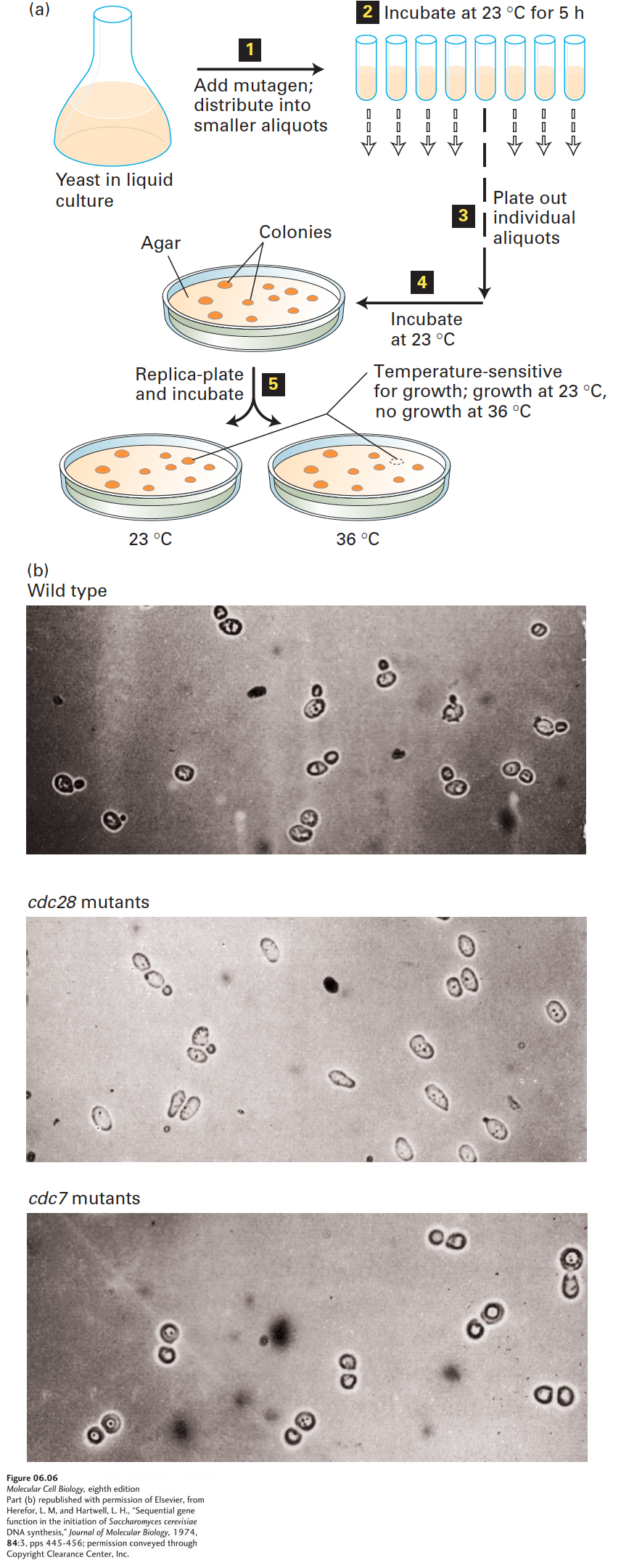
EXPERIMENTAL FIGURE 6- 6 Haploid yeast cells carrying temperature- sensitive lethal mutations can be maintained at permissive temperature and analyzed at nonpermissive temperature. (a) Genetic screen for temperature- sensitive cell division cycle (cdc) mutants in S. cerevisiae. Yeast cells that grow and form colonies at 23 °C (permissive temperature) but not at 36 °C (nonpermissive temperature) may carry a lethal mutation that blocks cell division. See L. H. Hartwell, 1967, J. Bacteriol. 93:1662. (b) Assay of temperature- sensitive colonies for blocks at specific stages in the cell cycle. Shown here are micrographs of wild- type yeast and two different temperature- sensitive mutants after incubation at the nonpermissive temperature for 6 hours. Wild- type cells, which continue to grow, can be seen with all different sizes of buds, reflecting different stages of the cell cycle. In contrast, cells in the lower two micrographs exhibit a block at a specific stage in the cell cycle. The cdc28 mutants arrest at a point before emergence of a new bud and therefore appear as unbudded cells. The cdc7 mutants, which arrest just before separation of the mother cell and bud (emerging daughter cell), appear as cells with large buds.
[Part (b) republished with permission of Elsevier, from Herefor, L. M, and Hartwell, L. H., “Sequential gene function in the initiation of Saccharomyces cerevisiae DNA synthesis,” Journal of Molecular Biology, 1974, 84:3, pps 445- 456; permission conveyed through Copyright Clearance Center, Inc.]
[Leave] [Close]